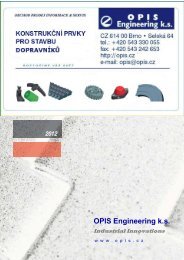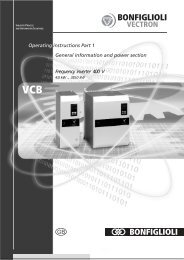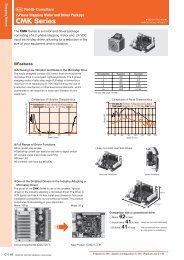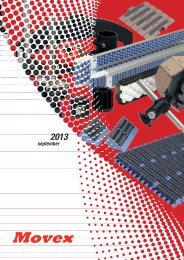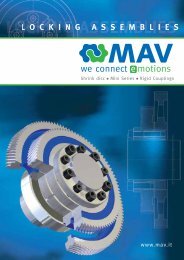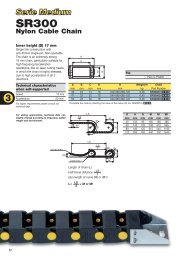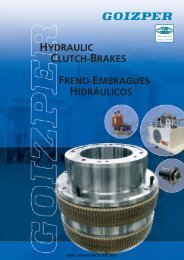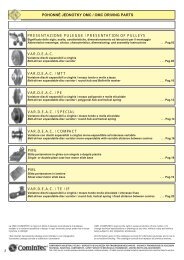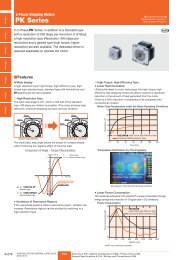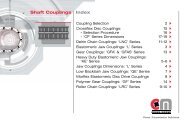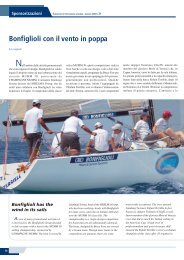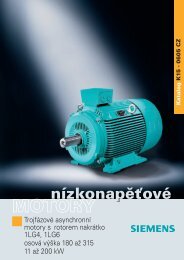Operating Instruction - Frequency Inverter 230V / 400V ... - opis.cz
Operating Instruction - Frequency Inverter 230V / 400V ... - opis.cz
Operating Instruction - Frequency Inverter 230V / 400V ... - opis.cz
- No tags were found...
You also want an ePaper? Increase the reach of your titles
YUMPU automatically turns print PDFs into web optimized ePapers that Google loves.
5 Electrical InstallationThe electrical installation must be carried out by qualified staff according to the generaland regional safety and installation directives. For a safe operation of the frequencyinverter it is necessary that the documentation and the device specificationsbe complied with during installation and commissioning. In the case of special applications,you may also have to comply with further guidelines and instructions.Danger!When the frequency inverter is disconnected from power supply, themains, DC-link voltage and motor terminals may still be live for sometime. Wait for some minutes until the DC link capacitors have dischargedbefore starting to work at the unit.The connecting cables must be protected externally, considering the maximum voltageand current values of the fuses. The mains fuses and cable cross-sections are tobe selected according to EN 60204-1 and DIN VDE 0298 Part 4 for the nominal operatingpoint of the frequency inverter. According to UL/CSA, the frequency inverter issuitable for operation at a supply network of a maximum of 480 VAC which delivers amaximum symmetrical current of 5000 A (effective value) if protected by fuses ofclass RK5. Only use copper cables with a temperature range of 60/75 °C.Warning! The frequency inverters are to be grounded properly, i.e. large connectionarea and with good conductivity. The leakage current of the frequencyinverters may be > 3.5 mA. According to EN 50178 a permanentconnection must be provided. The protective conductor cross-sectionrequired for grounding the fixing plate must be at least 10 mm², or asecond protective conductor must be installed electrically parallel to thefirst one. In these applications, the cross-section must correspond to therecommended cross-section of the wire.Connection conditions− The frequency inverter is suited for connection to the public or industrial supplymains according to the technical data. If the transformer output of the supplymains is ≤ 500 kVA, the optional mains commutation choke is only necessary forthe frequency inverters identified in the technical data. The other frequency invertersare suitable for connection without a mains commutating choke with arelative mains impedance ≥ 1%.− It must be checked, based on the specifications of EN 61000-3-2, if the devicescan be connected to the public supply means without taking additional measures.The frequency inverters ≤ 9.2 kW with integrated EMC filter comply with theemission limits of the product standard EN 61800-3 up to a motor cable length of10 m, without additional measures being required. Increased requirements inconnection with the specific application of the frequency inverter are to be met bymeans of optional components. Commutating chokes and EMC filters are optionallyavailable for the series of devices.− Operation on unearthed mains (IT mains) is admissible after disconnection of theY capacitors in the interior of the device.− Interference-free operation with residual-current device is guaranteed at a trippingcurrent ≥ 30 mA if the following points are observed:− Pulse-current and alternating-current sensitive residual current devices (TypeA to EN 50178) in the case of a connection of frequency inverters with onephasepower supply (L1/N)1. All-current sensitive residual current devices (Type B to EN 50178) in the caseof a connection of frequency inverters with two-phase (L1/L2) or three-phase(L1/L2/L3) power supply.2. Use EMC filters with reduced leakage current or, if possible, do not use EMCfilters at all.3. The length of the shielded motor cable is ≤ 10 m and there are no additionalcapacitive components between the mains or motor cables and PE.02/06 27



